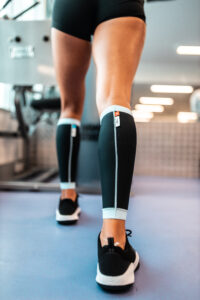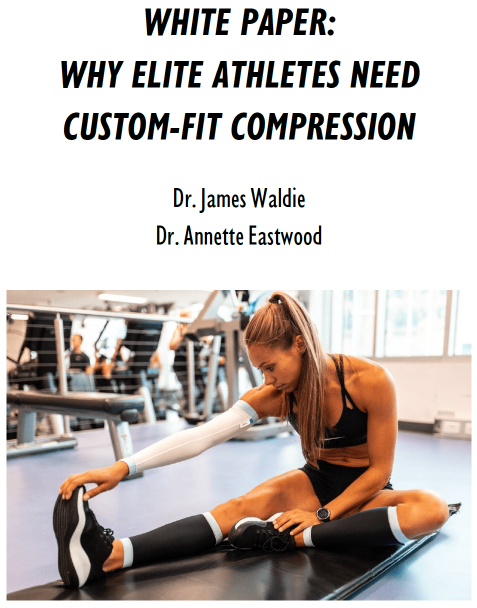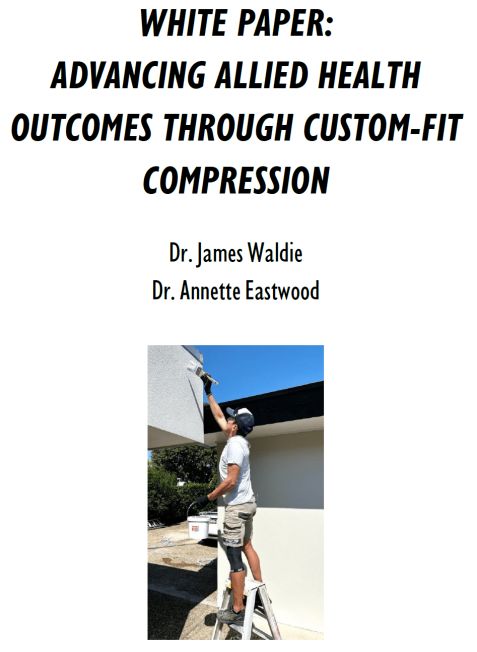Commercially available compression garments (off the shelf garments) are sized to an athlete based on measures of height and weight. By looking at the research into the pressure exerted by these garments, it’s clear why some athletes may not be receiving any benefit from commercially available compression garments and why custom fit would provide more accurate compression and more consistent benefits.
TITLE: The variation in pressures exerted by commercially available compression garments.
Hill, J., Howatson, G., Someren, K., Davidson, S., & Pedlar, C. (2015). Sports Engineering (Springer Science & Business Media B.V.), 18, 115-121.
Background
Commercially available compression garments are widely used by athletes to improve performance, reduce fatigue, and enhance recovery, however research studies have shown mixed results. The pressure exerted by these garments could be a major factor which determines their effectiveness.
Manufacturers recommend that these garments are sized based on height and weight, however differences in limb size and shape are likely to affect the fit. Therefore, there may be wide inter individual variation in the pressure exerted by commercially available compression garments which in some cases may not be sufficient for any benefit.
Aim
The primary aim of this study was to identify the compression pressure exerted by commercially available lower limb compression garments in active males and females.
Methods
50 participants (26 males and 24 females) with different body sizes were fitted with a pair of compression garments from one brand (2XU). Garments were fitted based on measures of height and weight according to manufacturers instructions. Compression pressure was measured at the quadriceps and calf and compared to the ideal pressure suggested by previous research (Watanuki and Maruta, 1994).
Results
At the quadriceps, compression pressure exerted for the male population (9.9 ± 2.9 mmHg) was significantly lower than the recommended minimum pressure of 15.1 mmHg. The garments failed to meet the minimum pressure by 34.4% in this group. Compression pressure achieved for the female population of 7.9 ± 1.7 mmHg fell short of the recommended pressure by 47%.
At the calf, for the male participants, the compression pressure fell short of the recommended values by 2.9% whereas in the female participants pressure fell short by 19.7%.
Overall, the compression pressure ranged from 4-16.7 mmHg at the quadriceps and 10.3-25 mmHg at the calf (Figure 1).
Figure 1: Scatter plot representing the compression pressure received by each individual. Diamonds represent pressure at the calf and circles represent pressure at the quadriceps. Horizontal lines represent the ideal pressure values suggested by Watanuki and Murata at the calf and quad (Hill et al., 2015).
Summary
- The results of this study indicate that there is a large degree of variability in compression pressure when commercially available compression garments are fitted according to manufacturer’s instructions.
- Pressure failed to meet minimum requirements in the majority of participants.
- The majority of people using commercially available compression garments may not be receiving adequate pressure to be of any benefit.
- It is possible that some individuals are receiving insufficient compression and some individuals are receiving excessive compression when commercially available compression garments are worn.
Given the inconsistency in pressure demonstrated by this study when commercial garments are worn, athletes wanting to maximise the effectiveness of compression should choose custom fit compression garments for accurate fit and consistent benefits.
Look out for part 2 of this study in our next research spotlight which compares the pressures exerted by three different brands of commercially available compression garments.





